Growing Blog
Working With Mushroom Cultures on Agar
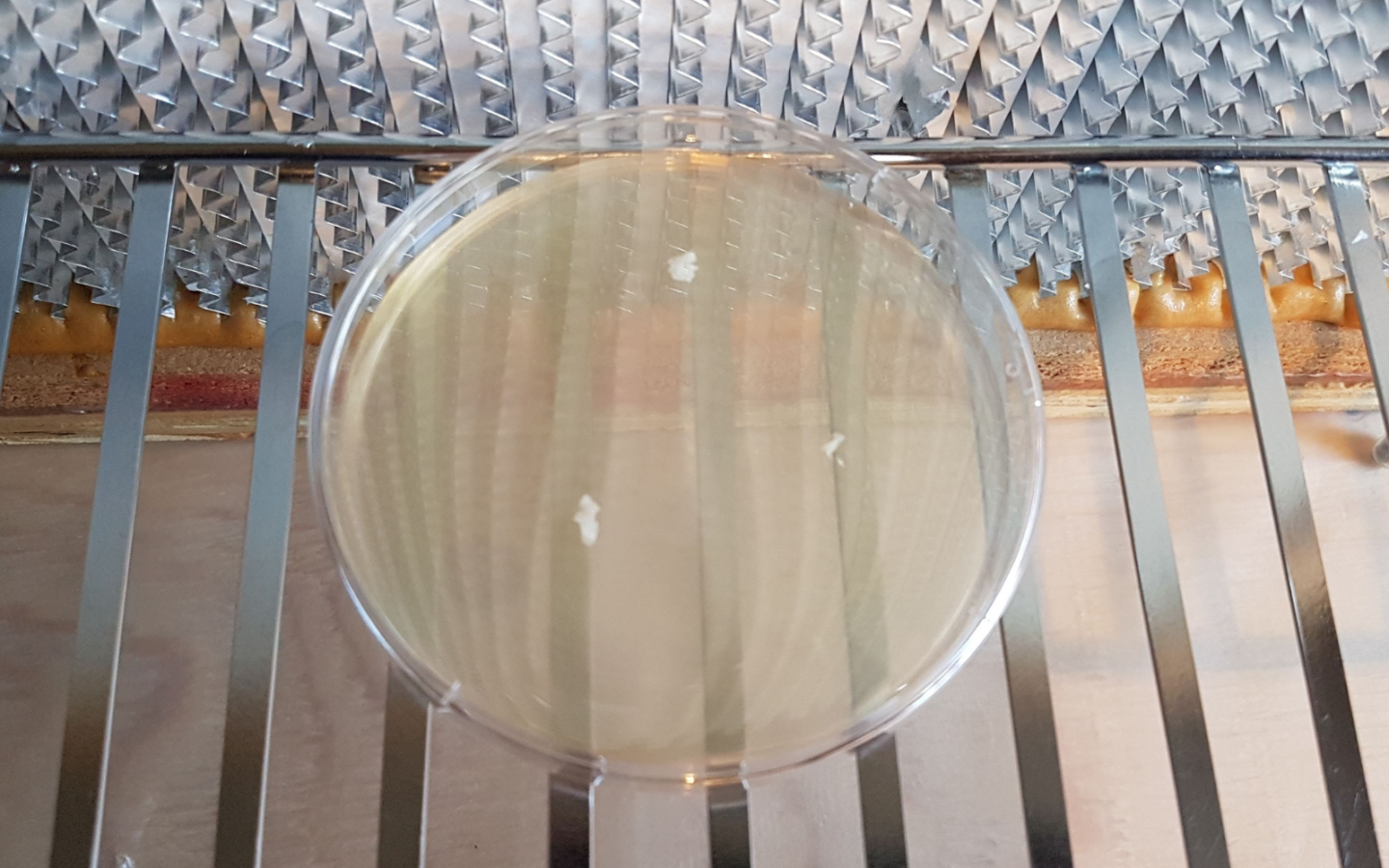
Growing mushrooms from scratch requires being able to store and properly propagate mushroom cultures (think mycelium) on nutrient rich agar.
For the mushroom cultivator, it is an essential skill.
Properly transferring cultures allows you to “grow out” mushroom different species for the purpose of making grain spawn. It also allows for the ability to “clean” a culture that has been contaminated.
Further, if you want to store cultures for long term use, and be able to make multiples copies of a mushroom culture, then agar work is a necessity.
Starting With Sterilized Agar Plates
Before you can transfer and store mushroom cultures on agar, you need properly made, nutrient rich agar plates. The basic process for doing this is to mix up a nutrient rich agar solution, pressure sterilize it, and then pour the mix onto sterile dishes in a clean environment.
The most commonly used agar recipe for mushroom cultivation is Malt Extract Agar. You need to learn how to make these plates before doing any other agar work.
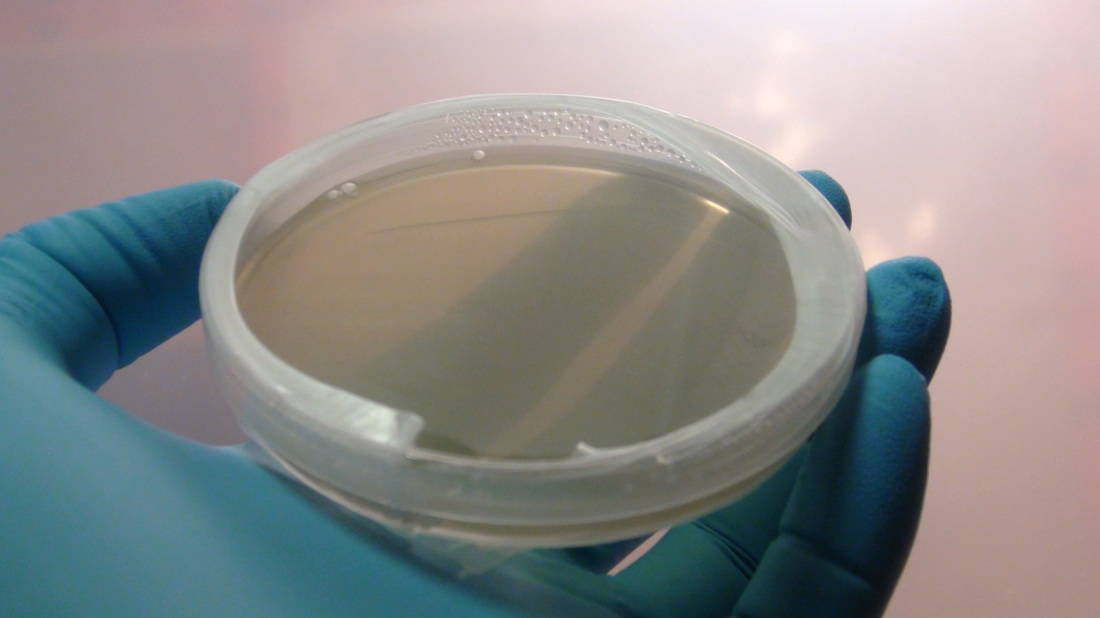
Culture Slants
Another common method for storing mushroom cultures long term is to use “culture slants”.
Here, the principle process is the same- pure mycelium is placed on a nutrient rich agar and allowed to grow.
The difference is that test tubes are used instead of petri dishes. The test tubes are usually made so that the agar is solidified at an angle, allowing for more surface area inside the tube- which is why they are called “slants.”
Culture slants serve as better containers for long term storage of mushroom cultures, since properly stored slants can be viable many years after they are made.
Petri dishes, on the other hand, are better suited for short term storage and for the purposes of culture propagation.
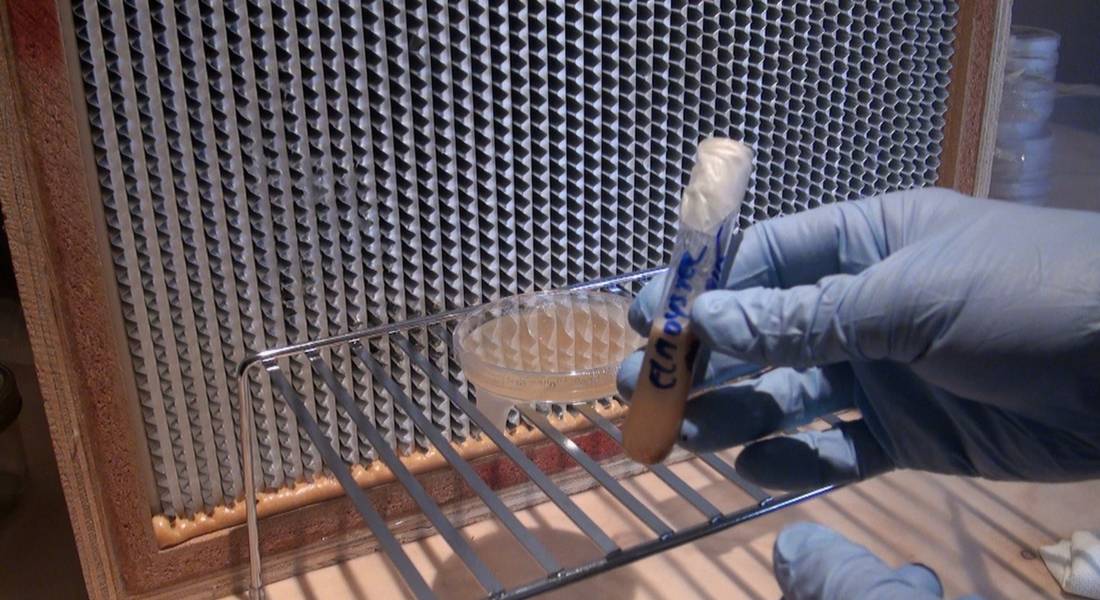
Transferring Cultures on Agar
Things You’ll Need
- Properly Prepared Nutrient Rich Agar Plates
- A scalpel or sharp knife
- An alcohol burner or a steady flame source for sterilizing the blade
- A laminar flow hood, Still Air Box or similarly clean environment
- Parafilm or masking tape
- A viable mushroom culture on petri dish, culture slant, or even a syringe
Steps for Transferring Cultures
1. Clean Up
Start by cleaning the outside of the dishes / slants with rubbing alcohol. Ensure that your hands, scalpel and all other tools are clean. Consider wearing nitrile gloves and a surgical mask to prevent contaminants landing on the fresh plate from your hands or breath.
2. Set Up the Dishes
Remove the parafilm or masking tape. Set the dishes side by side in front of the flow hood. It may be easier to set the new plate on the opposite side of your working hand.
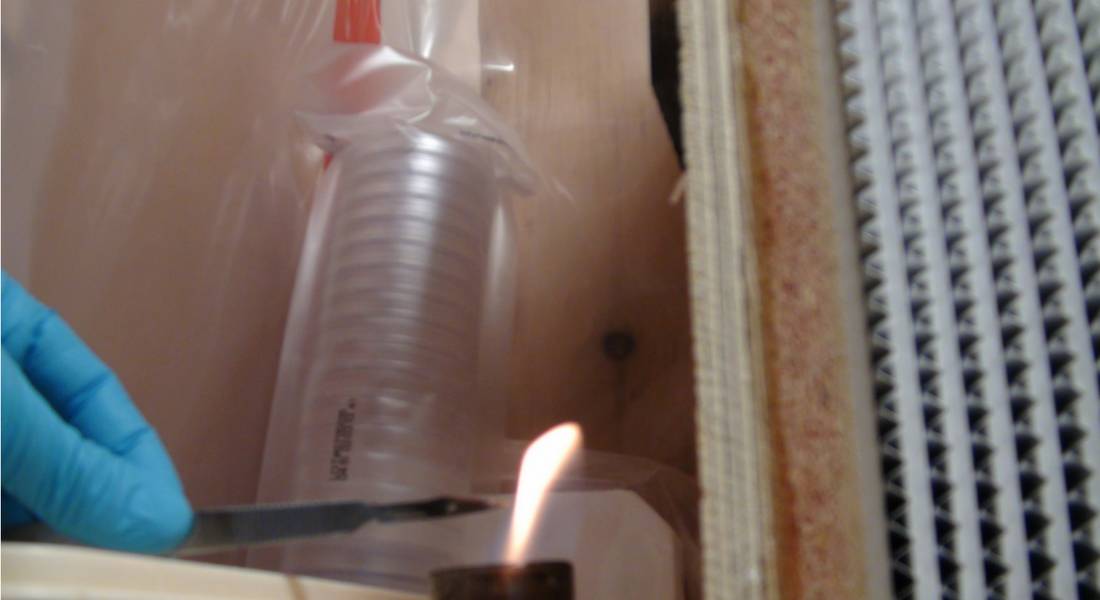
3. Flame Sterilize Scalpel
You should flame sterilize the scalpel until the blade is glowing red hot. This needs to be done between each and every transfer, so have a constant flame going on your work bench. This can be achieved most easily with an alcohol lamp, but you can also use a shot glass that is ¾ full with rubbing alcohol. Just ensure that the shot glass cannot tip over while it is burning!
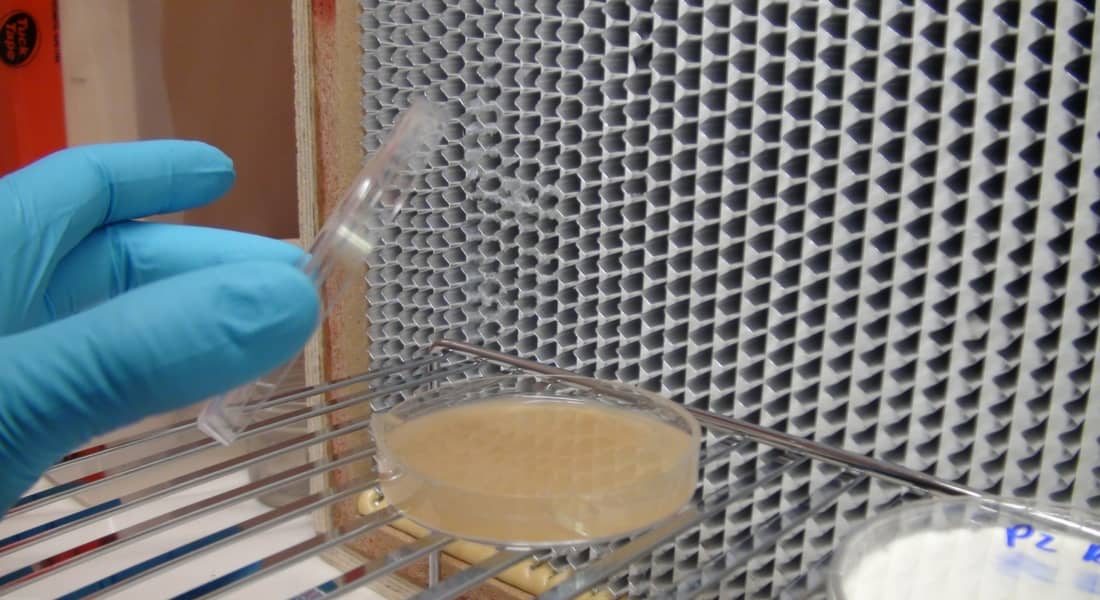
4. Cool the Blade
Once the blade is red hot, cool it off rapidly by dipping into the agar on the receiving dish. Gently lift the lid off the dish keeping your hand on the back half of the lid, downstream from the rest of the plate. Try not to contact the very edge of your plate with your hands. Handle it minimally, and never remove the lid from the stream of laminar flow.
With the lid removed, quickly dip the blade into the agar near the edge of the dish. You will hear a audible sizzle. Quickly replace the lid back onto the receiving dish.
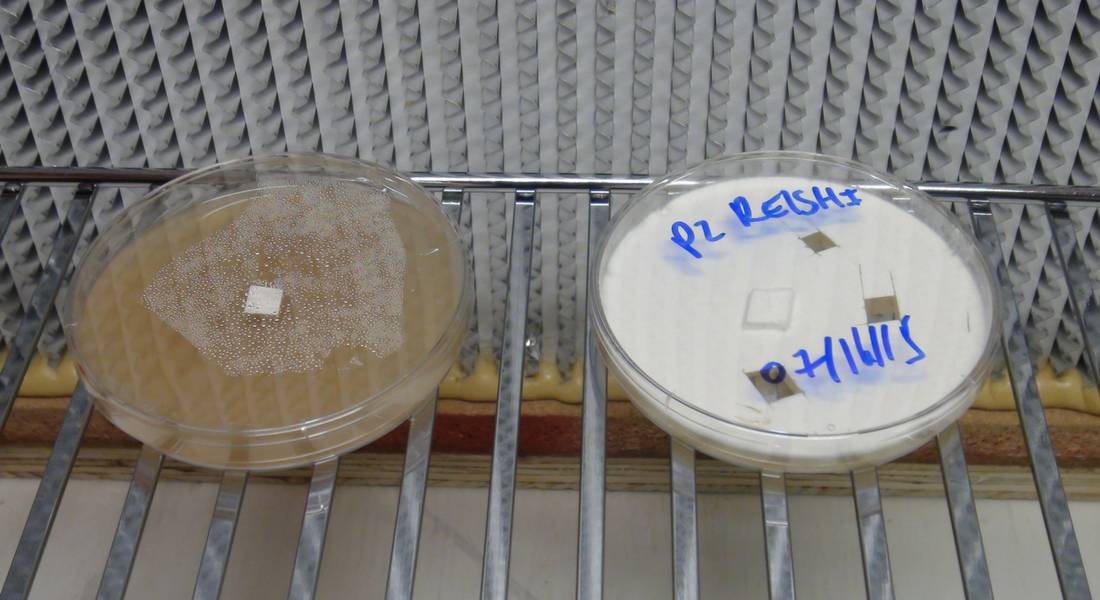
5. Remove a Piece of Mycelium
With the now cooled blade, open the lid in the culture-containing dish. Hold it steady while you cut a small piece of agar (containing mycelium) out of the dish. A 1 cm x 1 cm piece will usually suffice. Once the piece is cut, stab it with your scalpel, and quickly transfer it over to the receiving dish, placing it at the center. Ensure that the culture piece stays in the laminar flow, preferably upstream of the plates.
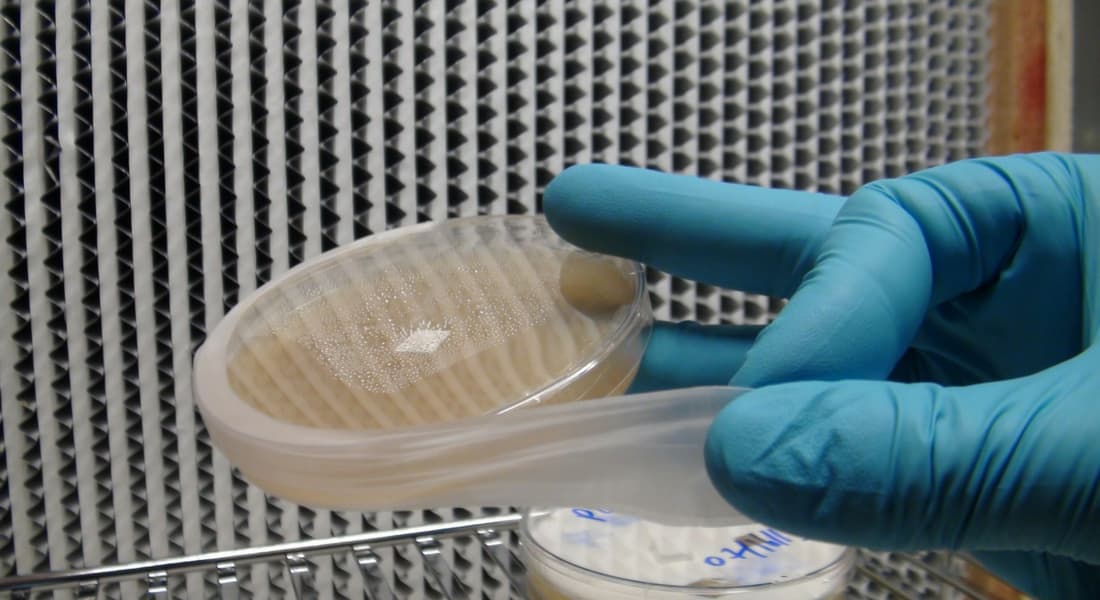
6. Seal the Edge of the Plate
Seal the edge of the new plate with parafilm. If you don’t have parafilm, you can always use masking tape. The new culture dish should now be labeled with the species and the date and transferred to a clean room-temperature environment. Repeat the process to make additional plates.
Transferring from Culture Slants
The process for transferring cultures from slants is very similar. Just ensure that the slant if entirely in the flow of the hood, with the open end facing as far upstream as practical. It is usually not possible to get a 1 cm x 1 cm piece from a culture from a slant, so cut into it and grab what you can. The slant can usually be sealed back up so that the mycelium can re-grow and be placed into long term storage for later use.
Transferrring from Liquid Culture in a Syringe
Some commercially available cultures come in the form of a liquid culture syringe. Commonly, these syringes are used for transferring the culture directly to grain spawn. If you would like to keep these cultures for long term use, you can do so rather easily by inoculating agar plates with this liquid syringe.
Start by flame sterilizing the tip of the syringe until it is red hot. Quickly and carefully lift the lid of the receiving dish and shoot a small amount (1-1.5 CC) of the culture into the center of the dish. The first bit of liquid coming out of the syringe tip will cool it off. Flame sterilize the tip of the syringe between every plate.
Ensure that these plates are kept level so that liquid culture doesn’t flow out of the side of the plates. The culture should quickly adapt to the new plate, and be ready for long term storage or transfer to another plate in about 7-10 days, depending on the species.
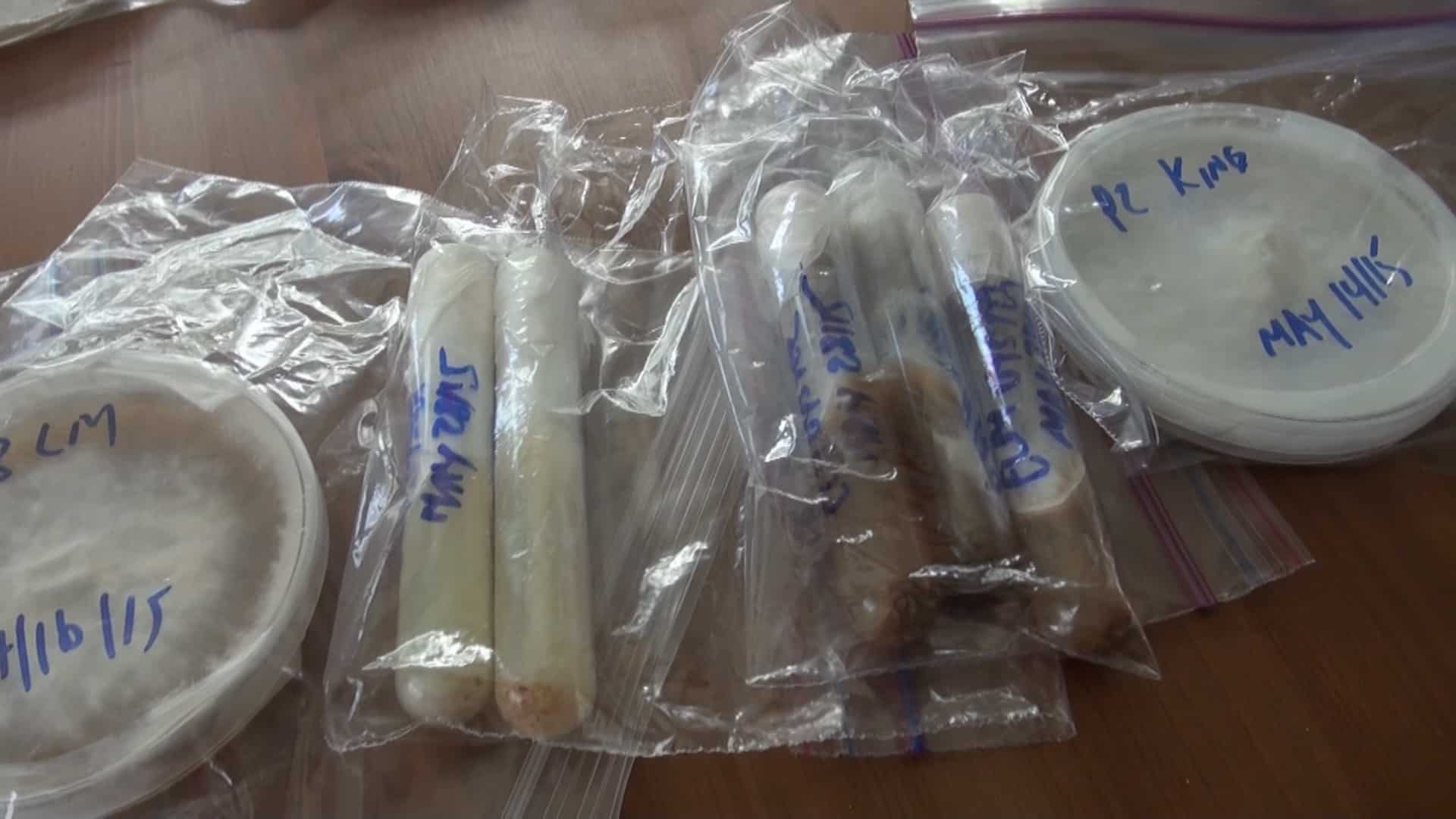
Storing and Using Cultures Long Term
Cultures can be stored for long periods of time, and can be used over and over for a consistent supply of mushrooms. Once the mycelium on the plate is almost run out (from transferring to grain ect.), transfer it to a new plate. This plate can then be grown out and turned into more plates, thus making a seemingly endless store of genetic copies- ready to be turned into mushrooms.
Each mycelium covered plate should be able to make at least 8-10 more plates, causing the total number of plates to grow exponentially. In just five transfers you could potentially have 10,000 plates or more from one original!
Keep in mind though, that with every transfer, the culture takes another step away from the original and eventually will stop growing, or may develop a genetic mutation. Keep track of the number of transfers by writing the number on the lid of the dish.
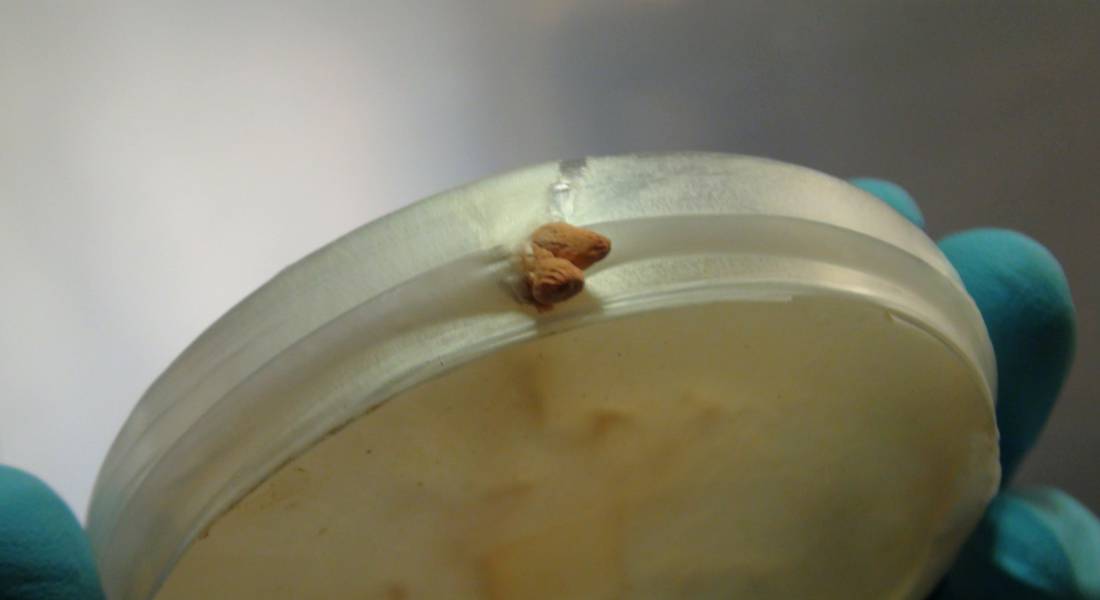
The plate should either be used or put into long term storage just before the mycelium reaches the edge of the plate. Otherwise, the mycelium could easily grow though the parafilm, inviting contamination.
Most cultures can be stored long term in the refrigerator. The culture will stop growing, but will remain viable for a long time, up to a few years or more. That being said, you are better off to check viability and grow the culture out every couple months.
Some cultures, such as the pink oyster, will likely die off of placed in the fridge. Check which method of storage is appropriate for your particular culture.
Next Steps
With this essential skill, the cultivator has the ability to manage their own culture library. This allows for making grain spawn from scratch, storing cultures for a variety of species and only using them when required, being able to purify a contaminated culture, or even the ability to obtain new strains from the wild.
Culture work on agar opens up a whole world of possibilities for mushroom growers. What will you get up to next?

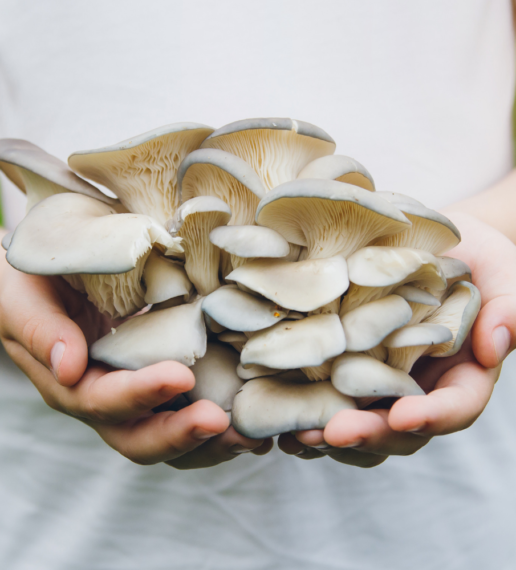
Great stuff.
Thanks Isaac!
Hi,
What should be the right temperature and light for the inoculated agar dishes? thanks 🙂
Hey Daro!
Room temperature and away from direct sunlight. 17-21 degrees is perfectly fine. After they are grown out though, they are best kept in the fridge.
All the best!
Tony
Hey Tony. You are doing great jobs here by sharing your experiences. Many thanks. If room tempreture goes above 21 degrees C is there any maximum temperature limit for inoculated agar dishes? Now my room between 24 25 degrees and some dishes look like stop growing…
I appreciate all of your hard work and your willingness to share what you have learned. I don’t plan on starting mushroom farming for another 14 years (when I retire) at which point I intend to find a way to incorporate it into an Aquaponics system, but have learned a TON from the dozen or so articles you have written and just wanted to say thank you. (I plan to grow some mushrooms for cooking, some to be used as a viable and renewable foodstock for fish and livestock, and maybe some to just use as a biofilter, but beginning to realize that there is a lot of potential uses for fungi beyond what I had previously thought. I want to eventually run with at least 4-5 different types of mushrooms)
Hi Tony. Great write up, really helpful. Just to clarify – after isolating a strain, would you recommend to make a slant and a master agar plate, then clone the master agar plate to more agar as needed, and go back to the slant to make another ‘first generation’ agar plate when needed? Could one use distilled sterile water storage in place of slants? Thanks so much for sharing your knowledge.
Yes, making slants is definitely a good strategy. You can keep making more plates, but I’m sure eventually this will turn into a poor strategy for long term storage. Not sure about liquid culture storage- could be worth a shot though.
How do the suppliers of commercial strains manage their cultures so that they can continuously supply the same strain? How do they avoid the issue of developing a genetic mutation or losing viability? Thanks for all you do Tony!
This website is great. I am a student and my team and I will be using this as a reference on our study about mushrooms 🙂
Hey Ash, so glad you like it! What are you guys studying?
Aside from a scalpel, what can also be used to cut a piece of mycelium?
Sharp knife or exacto-blade should work well!
After transferring from a spore print to an Agar dish, what temperature do you leave the dish out to grow healthy mycellium? Farenheit? After that, what temperature is safe to store in the refrigerator? Thanks for the help.
Hey Klebb! Just room temperature is fine (~70 degrees), no special heating or cooling required. I have stored mycelium in the fridge (~35 degrees) for all kinds of species, only had Pink Oyster die from the cold.
Hi Tony…wonderful work.. thank you. Two questions, what do you seal the slant with? And where is the best place to buy the hepa filter for the flow hood.
Thanks Cathy! You can seal the slant with polyfil stuffing, wrap with parafilm, or even use a specially made cap for test tubes. As for where to buy the flow hood- eBay is a good option, and there are some on Amazon and Alibaba aswell. Local filter shops are always a good bet if you have one close.
Hi Tony,
Thanks for the informative post. How do i then take the petri-dish culture and turn it into mushrooms? Perhaps you have already discussed this and can refer me to a link?
Hey Warren! You first need to use the culture to make grain spawn https://learn.freshcap.com/learn/how-to-make-perfect-grain-spawn-for-growing-mushrooms-at-home/, then use the grain spawn to inoculate a fruiting block. https://learn.freshcap.com/learn/the-fruiting-block-growing-gourmet-mushroom-on-sawdust/
Hope that helps!
What’s the best place and max amount of time to store a fresh batch of agar dishes? And for post inoculated dishes?
Hello Tony,
how much time it take to grow mycelium fully on agar plates?
and I appreciate your hard work.
really appreciate all this tony 🙂 thanks for the help
Awesome thank you Tony! But the obvious next question is…how do I make my first culture? Does a hobby grower have to always buy that first one from a mushroom expert or can that initial culture be started at home as well?
When u go from mss to agar do u let it colonize in the fridge or in a incubation box(like around 72-82 degrees Fahrenheit).